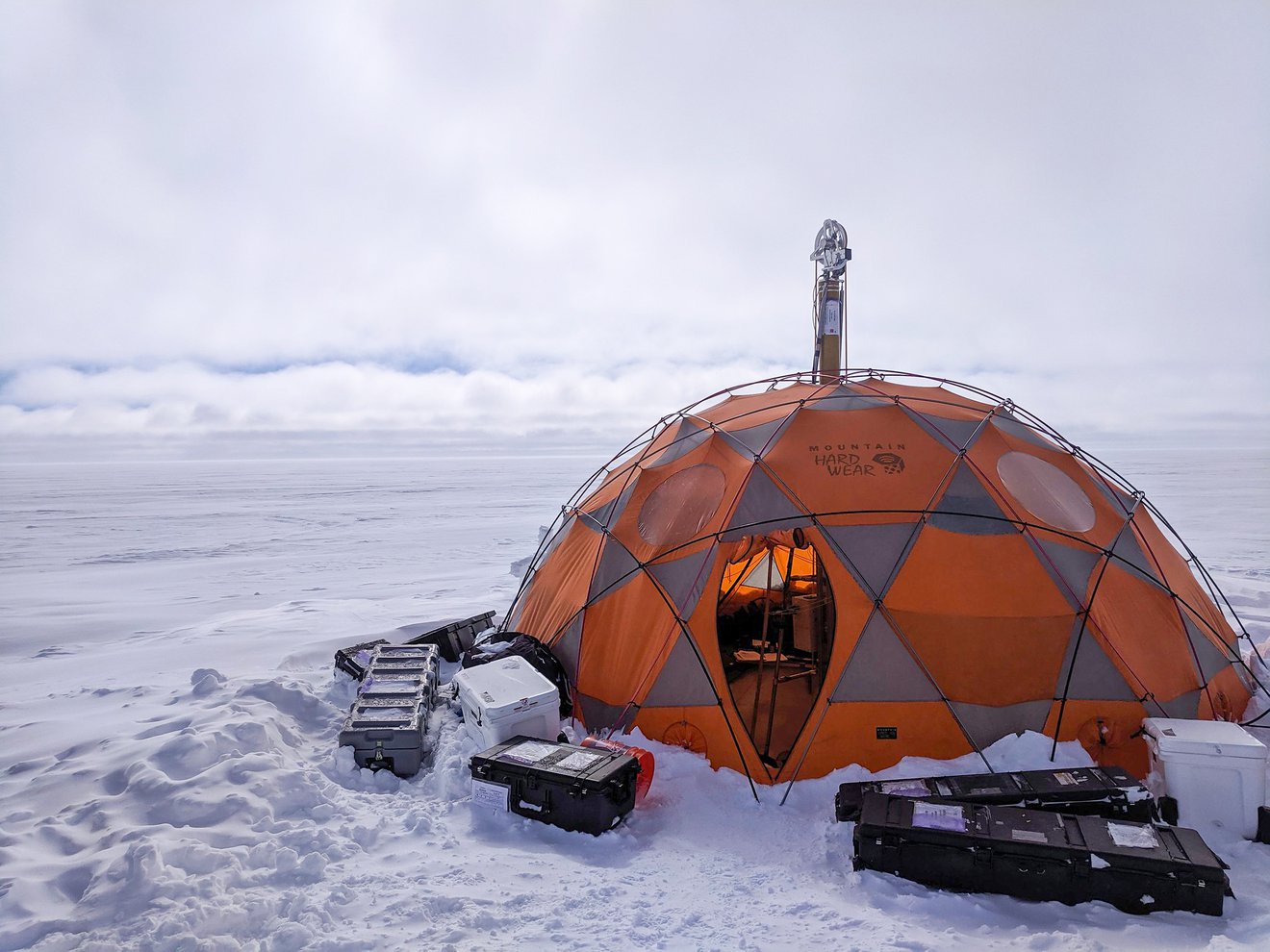Ever since it landed in the Jezero Crater on Feb. 18th, 2021, the Perseverance rover has been prepping its scientific instruments to begin searching for signs of past life on the Red Planet. These include spectrometers that will scan Martian rocks for organics and minerals that form in the presence of water and a caching system that will store samples of Martian soil and rock for retrieval by a future mission.
These telltale indicators could be signs of past life, which would most likely take the form of fossilized microbes. In the near future, a similar instrument could be used to search for present-day extraterrestrial life. It’s known as the Wireline Analysis Tool for the Subsurface Observation of Northern ice sheets (WATSON), and could be used to find evidence of life inside “ocean worlds” like Europa, Enceladus, and Titan.
Beyond Earth, Mars is the most habitable body in the Solar System – at least, when it comes to life as we know it. While the Martian environment is rather harsh today, multiple lines of evidence have confirmed that it once was a warmer, wetter place. In addition to a denser atmosphere, Mars also had abundant water on its surface in the form of rivers, lakes, and an ocean that covered much of the northern hemisphere.
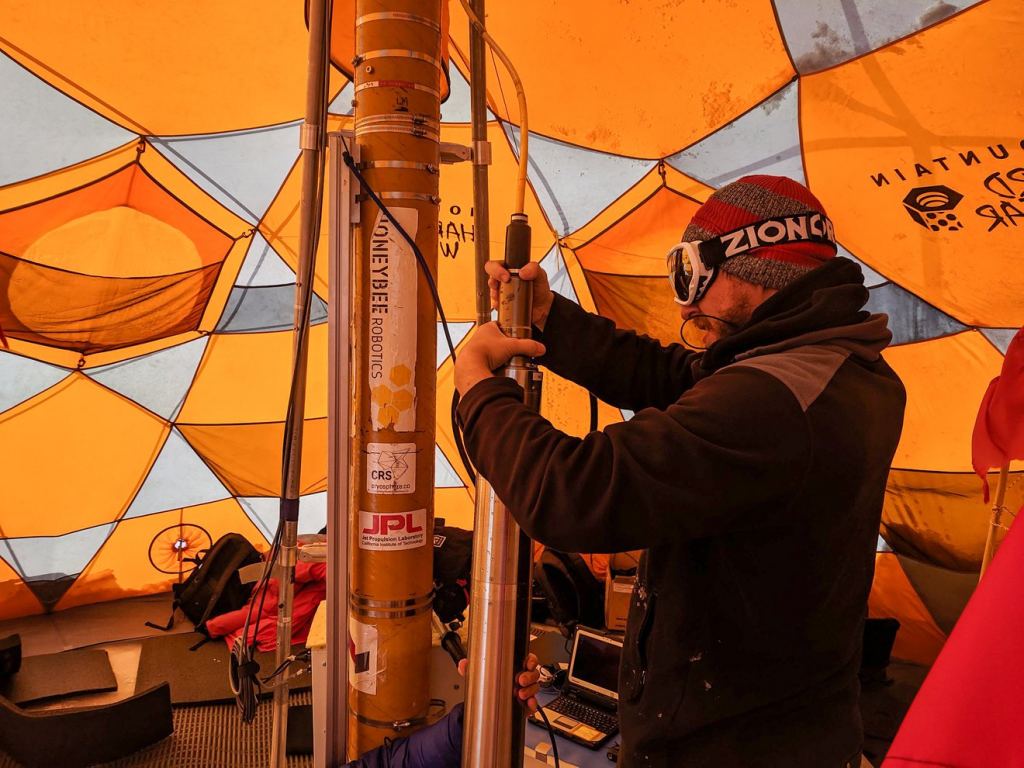
Naturally, this has led to questions about whether Mard could have supported life in the past. To investigate this, Perseverance carries an instrument called the Scanning Habitable Environments with Raman & Luminescence for Organics & Chemicals (SHERLOC). Using cameras, spectrometers, and an ultraviolet (UV) laser, SHERLOC will look for minerals and organic molecules associated with biological processes (aka. “biosignatures.”)
Luther Beegle, the principal investigator for the Mars 2020 SHERLOC instrument, explained in a recent NASA press release:
“Perseverance is going to look for a shopping list of minerals, organics, and other chemical compounds that may reveal microbial life once thrived on Mars. But the technology behind SHERLOC that will look for past life in Martian rocks is highly adaptive and can also be used to seek out living microbes and the chemical building blocks for life in the deep ice of the moons of Saturn and Jupiter.”
Beyond Mars, many scientists believe that moons like Europa, Enceladus, and Titan are the most likely places to find evidence of extraterrestrial life. Beneath their icy exteriors, these moons are thought to have vast oceans of liquid water that contain the chemical compounds associated with biological processes. Combined with hydrothermal activity at the core-mantle boundary, it is possible that these moons also contain life.
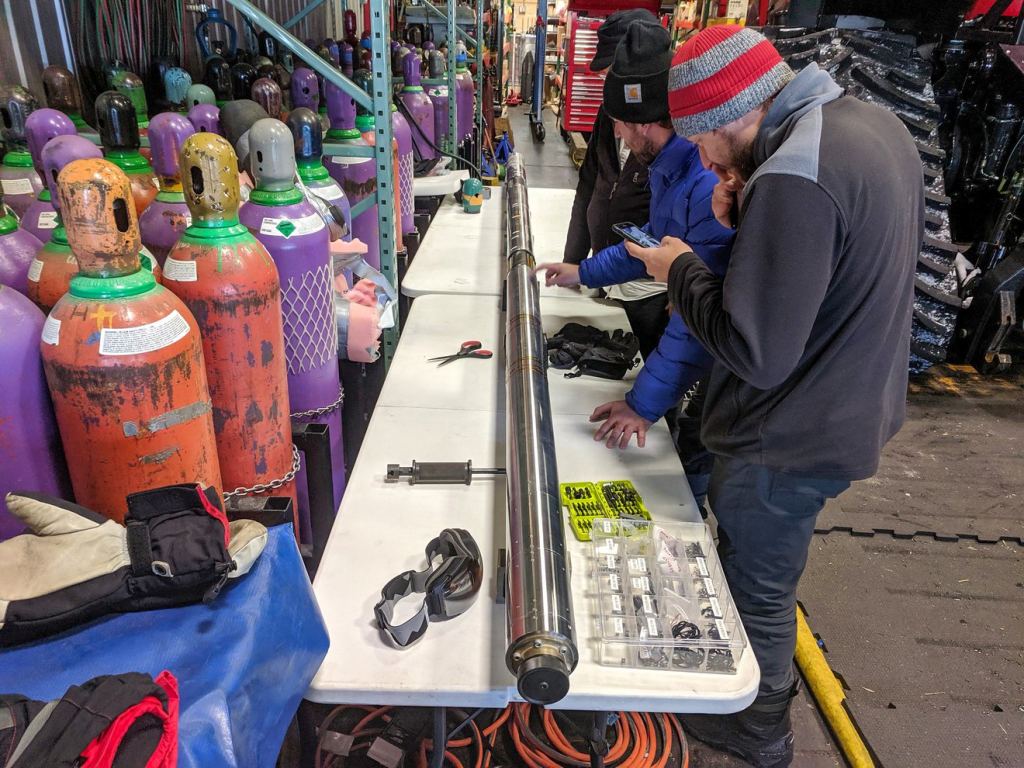
Unfortunately, finding evidence of that life represents a major challenge. Unlike Mars, scientists may not be able to find evidence of it locked away in the surface ice. Probing deeper, into the watery environments hidden beneath, will require instruments of a different sort. This is where the WATSON instrument, developed by NASA’s Jet Propulsion Laboratory (JPL), comes into play.
This prototype instrument is essentially a tube that measures 1.2 meters (3.9 foot) long and is designed to obtain samples from deep within an ice sheet. WATSON was recently coupled with Honeybee Robotics‘ Planetary Deep Drill (PDD), which is also designed to obtain drill samples for geological (and astrobiological analysis), and the combination was successfully tested in the extreme cold of Greenland’s ice sheets.
This environment was selected for a 2019 campaign because of the way it approaches conditions present on the surface of icy moons. Saturn’s moon Enceladus, for example, is known for experiencing periodic eruptions around its southern polar region, where hydrothermal vents deep beneath the ice cause water and organic molecules to spray through fissures in the surface.
In Greenland, the icy sheet in the middle of the landmass and away from the coasts is a suitable “Earth analogy” for Enceladus while the mangled ice at the edge of the glaciers near the coast can serve as an analog for the rugged and deep sections of Europa icy crust. For the sake of the 2019 campaign, WATSON was deployed to an existing borehole near Summit Station, a high-elevation remote observing station in Greenland.
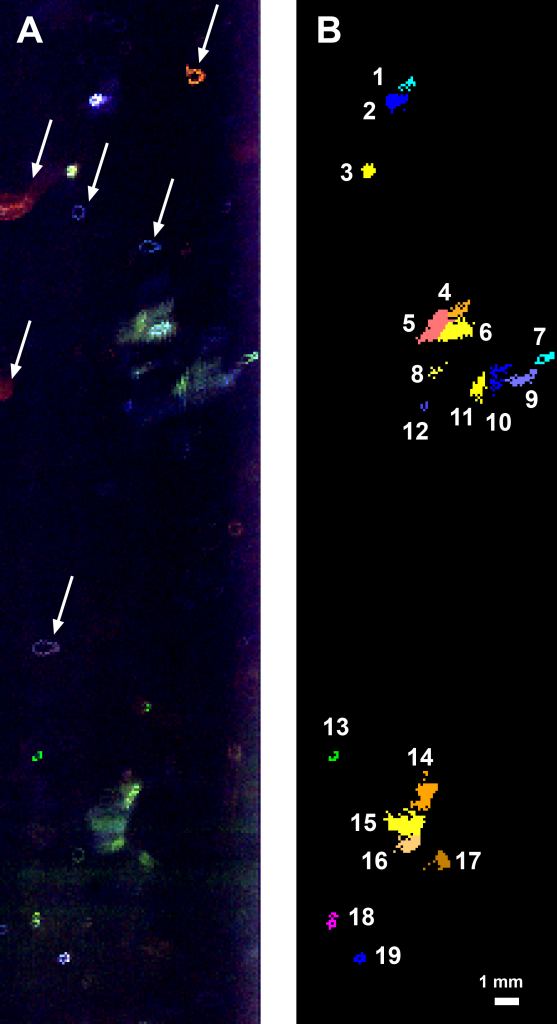
Once integrated with the PDD, WATSON was lowered more than 100 meters (330 feet) beneath the surface. Once there, it used its UV laser to illuminate the walls of the ice, which caused some molecules to glow. The faint light this produced was measured using a spectrometer to provide the research team with insight into the structure and composition of these molecules (as well as their distribution).
The results were then turned into a map (shown above) to show the grouping of molecules based on similar chemical compositions, which were consistent with both natural and artificially-produced compounds. These included aromatic hydrocarbons (originating from air pollution and/or decaying plant matter), organic polymers found in the support tissues of plants (lignins), complex acids found in soils, and other organic molecules.
In addition, the instrument recorded spectral signatures that are similar to those produced by clusters of microbes. From this, the team discovered that microbes deep in the ice are not distributed in layers (as previously expected) but tend to clump together in blobs. As Malaska described it:
“We created maps as WATSON scanned the sides of the borehole and the clustering hotspots of blues greens and reds – all representing different kinds of organic material. And what was interesting to me was that the distribution of these hotspots was pretty much the same everywhere we looked: No matter if the map was created at 10 or 100 meters [33 or 330 feet] in depth, these compact little blobs were there.”
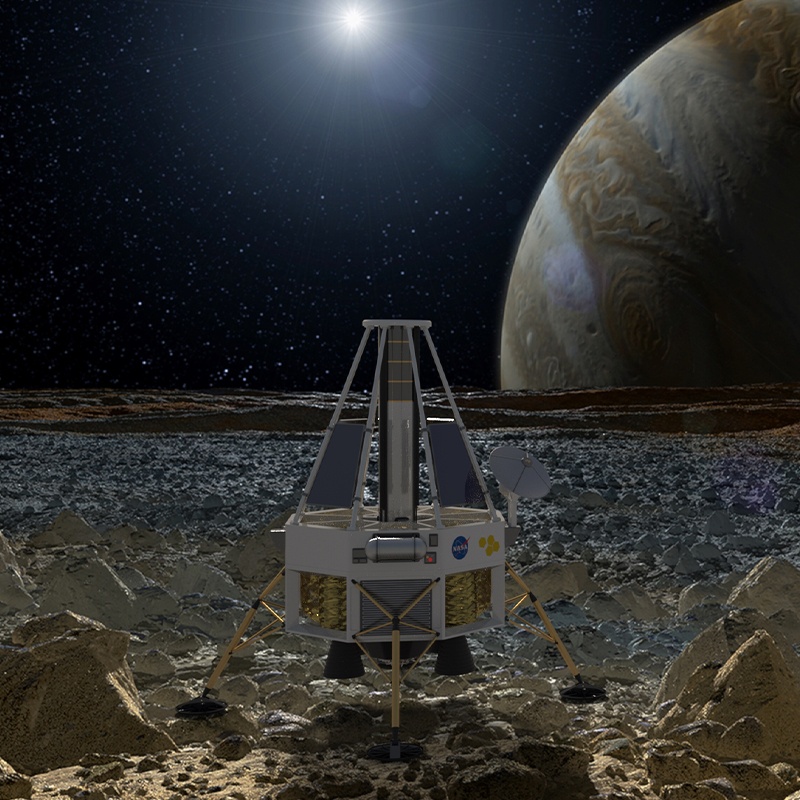
While there’s still lots of testing that needs to be done before the technology can be used in an extraterrestrial environment, the team was quite encouraged by how sensitive WATSON was to a wide variety of biosignatures. This will be very useful when it comes time to mount missions to ocean worlds, where the distribution and density of potential biosignatures are currently unknown.
Said Rohit Bhartia, the principal investigator for WATSON and deputy principal investigator for SHERLOC (at Photon Systems):
“If we were to collect a random sample, we are likely to miss something very interesting, but through our first field tests, we’re able to better understand the distribution of organics and microbes in terrestrial ice that could help us when drilling into the crust of Enceladus.”
In the near future, a smaller version of WATSON could be included aboard a future robotic mission to one of these moons – such as the proposed Europa Lander concept. The instrument would be able to scan into the surface ice of these bodies to search for signs of organic molecules associated with biological processes.
These could be returned to Earth as part of a sample-return mission or analyzed in-situ using a deep-ultraviolet laser Raman spectroscopy instrument. This latter method would be preferable in some respects since it would allow astronomers to study potential biosignatures in the context of their environment.
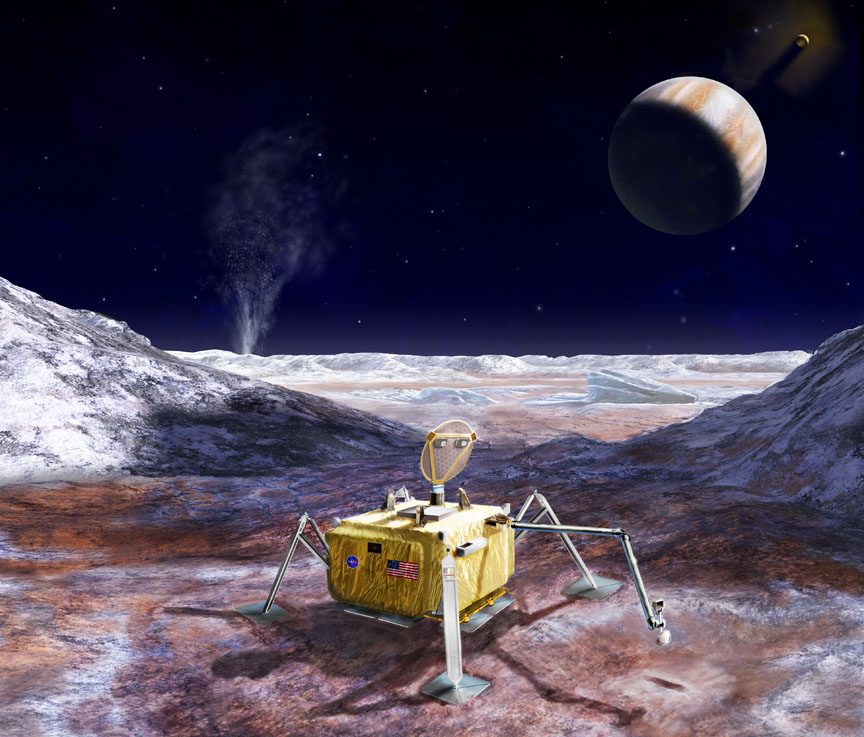
As Mike Malaska, an astrobiologist at JPL and the lead scientist for WATSON, explained:
“It would be great if we first studied what these samples actually looked like in their natural environment before scooping and blending them up into a slurry for testing. That’s why we’re developing this non-invasive instrument for use in icy environments: to get a deep look into the ice and identify clusters of organic compounds – maybe even microbes – so they can be studied before we analyze them further and lose their native context or modify their structure.”
As their names suggest, there’s a certain kinship between the SHERLOC and WATSON instruments. While they may differ in terms of particulars, they are ultimately very similar in terms of purpose. Both rely on a deep-ultraviolet laser and spectrometer to identify biosignatures and both rely on high-resolution cameras to take close-up pictures of what they find.
And with any luck, they both will contribute to some of the greatest scientific breakthroughs ever made. In short, they could help us to finally answer the question “is there life beyond Earth?”
Further Reading: NASA

